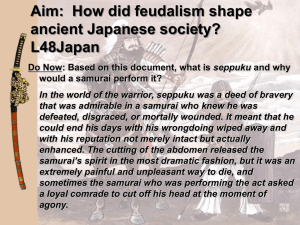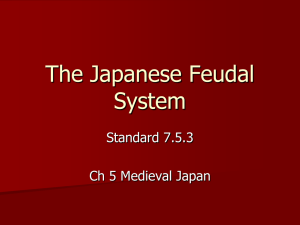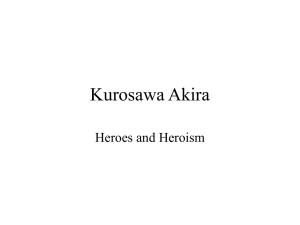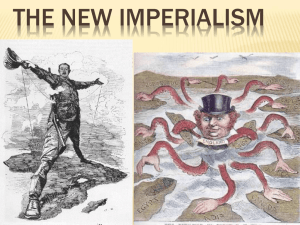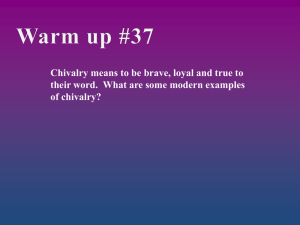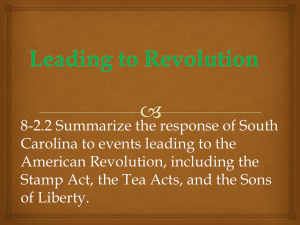The Rise of the Warrior Class in Japan Chapter 22
advertisement
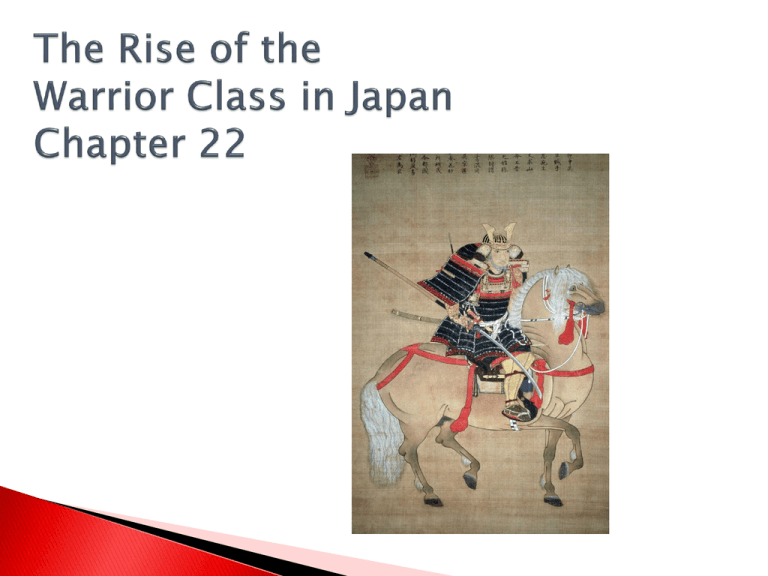
In 1185 Minamoto Yoritomo came to power in Japan. In 1192, he took the title of shogun, or commander-in-chief. Yoritomo did not take the place of the emperor. Instead, he set up a military government with its own capital in the city of Kamakura. While the imperial court remained, emperors played a less and less important role in governing Japan. The start of the Kamakura government marked the beginning of a new era in Japanese history. Professional warriors, SAMURAI, became Japan’s ruling class. It lasted 700 years until the emperor was restored to power in 1868. Samurai were famed for their courage and skill. An elaborate culture and code of conduct grew up around the samurai. A samurai was expected to be: ◦ Honest ◦ Brave ◦ Intensely loyal to his lord The word samurai means “those who serve”. The code was very strict. Samurai often killed themselves with their own swords rather than “lose face” or personal honor. The Samurai were educated in art, writing, and literature. Many were devout Buddhist. The military government was led by a shogun. Yoritomo and his successors rewarded warriors or samurais with appointments to office and grants of land. In return, the samurai pledged to serve and protect the shogun. The rise of the samurai brought a new emphasis on military values. They trained in the arts of war, especially archery. During this period, women as well as men could be samurai. By the 14th century, Japan’s warrior society resembled the lord-vassal system of medieval Europe. The shogun now ruled with the help of warriorlords called daimyos. In turn, the daimyos were supported by large numbers of samurai. Over time, the position of the shogun weakened as daimyos became increasingly powerful. The daimyos treated their individual lands as independent kingdoms and the samurai allied themselves with their daimyos lords. In the late 15th century, Japan fell into chaos and the daimyos warred with one another for land and power. The samurai fought on behalf of their daimyos. After a century of bloody warfare, a series of skilled generals defeated their rival daimyos and reestablished a strong military government. In 1603, Tokugawa Ieyasu, became shogun. He established a new capital in Edo (present-day Tokyo). Armor ◦ A samurai went into battled dressed in heavy armor. ◦ Under the armor, he wore a colorful robe called a kimono and baggy trousers. Shinguards made of leather or cloth protected his legs. ◦ The armor was unique. It was made of rows of small metal plates coated with lacquer and laced together with colorful silk cords. It was strong and flexible. ◦ Boxlike panels of armor covered the samurai’s chest and back. ◦ Metal sleeves covered his arms. ◦ Broad shoulder guards and panels hung over his hips. ◦ After dressed, they put a ferocious looking iron mask that was meant to frighten as well as protect their face. ◦ Last came their helmet – they burned incense in it. That way his head would smell sweet if it were cut off in battle. Weapons ◦ Samurai’s fought with bows, arrows, spears, and swords. ◦ Wooden bow could be up to 8 feet long. ◦ They would ride horses in battle, pulling arrows from the quivers on their backs. ◦ Most prized possession – their sword. ◦ They were the finest in the world. Flexible enough not to break but hard enough to be razor sharp. They carried two swords – long sword with a curved blade. A shorter sword used for cutting off heads. Wearing a sword was a privilege and right of the samurai. Swords were passed down and given as prizes to loyal warriors. Military Training ◦ It was extensive. ◦ Apprenticed to archery masters who taught them mental and physical techniques. ◦ Practiced until they could shoot without thinking. ◦ Also learned to breathe properly and to shoot at their enemies while riding on the back of a galloping horse. ◦ Fencing was just as demanding. ◦ Learned how to force the enemy make the first move, how to stay out of range of an enemy sword, how to fight in tight spaces, and against more than one opponent. ◦ They also learned how to fight without weapons – martial arts. Battle ◦ Samurai had a unique style of battle. 1st messengers from opposing sides met to decide the time and place of combat. Next, the two armies faced each other a few hundred yards apart. Samurai on both sides shouted their names, ancestors, heroic deeds, and reason for fighting. Then the armies charged. As they clashed, they fought savagely in hand-to-hand combat. Each samurai found an opponent who matched him in rank. He would try to knock his opponent off his horse, wrestle him to the ground, and slit his throat. After the battle, the winning side cut off the heads of opponents they had killed. The heads were cleaned and mounted on boards. They presented the heads for inspection to the warlord in charge. Education in the art of war also included mental training. ◦ They learned self control so they could overcome their emotions. They also learned how to be always alert and prepared to fight. ◦ To learn how to endure pain and suffering, young samurai went for days without eating, marched barefoot in snow on long journeys, and held stiff postures for hours without complaining. ◦ To overcome their fear of death, they were told to think of themselves as already dead. Training in Preparedness ◦ Samurai could never relax. Danger could come at any moment so they had to cultivate their “6th sense”. ◦ They had to be prepared for attack at any moment and extensive training helped to prepare them for this. By the more peaceful 17th century, samurai were expected to be students of culture as well as fierce warriors. Two important aspects of culture were writing and literature. Samurai practiced calligraphy, the art of beautiful writing. Samurai wrote poetry. One famous samurai poet was Matsuo Basho. He invented a new form of poetry – haiku. A haiku poet uses images to suggest an idea or create a mood. A haiku has three lines of 5, 7, 5 syllables. An ancient pond A frog jumps in The splash of water. The samurai studied the tea ceremony. The ceremony fostered a spirit of harmony, reverence, and calm. It also served as a way to form political alliances. Each step had to be performed in a certain way. ◦ A tea master invited guests into a small room. They entered through a doorway so low they had to crawl. ◦ The tearoom was very simple. Only decorations were a scroll painting or an artistic flower arrangement. Guests sat silently, watching the master make and serve the tea. They engaged in sophisticated discussions. ◦ For the tea: master heated water in an iron urn over a charcoal fire. He scooped powdered green tea into a small bowl, ladled hot water into the bowl, and then whipped the water and tea with a whisk. Each guest in turn took the bowl, bowed to the others, took 3 sips, and cleaned the rim with a tissue. The he passed the bowl back to the master to prepare tea for another guest. Most Samurai were Buddhists. ◦ Two forms – Amida and Zen Amida: believed that all people could reach paradise by relying on the mercy of Amida Buddha. Zen: Appealed to the samurai because of the emphasis on effort and discipline. It stressed selfreliance and achieving enlightenment through meditation. The code of Bushido governed a samurai’s life. It called on samurai to be honest, fair and fearless in the face of death. They were expected to value loyalty and personal honor even more than their lives. A samurai’ supreme duty was to be so loyal to his lord that he would gladly die for him. If his lord was murdered, a samurai might avenge his death. Samurai were expected to guard their personal honor. The least insult on the street could lead to a duel. The price for failing to live up to the code of Bushido was seppuku, or ritual suicide. ◦ Many reasons for seppuku: Personal honor Avoiding capture in battle Atone for a crime or shameful deed, or an insult to a person of higher rank When their lord died A form of protest against a wrong or an injustice Shame their lord into behaving better Seppuku was an elaborate ceremony… ◦ Guests were invited ◦ Samurai prepared by taking a bath, unbinding his long hair, and put on white clothing used for dressing a corpse. ◦ He was served his favorite food. ◦ A sword was placed on a tray. ◦ He took the sword and plunged it into and across his stomach, trying to make a complete circle. ◦ A swordsman standing behind him quickly cut off his head to end his agony. The position of women in Samurai society declined over time. In the 12th century, the women of the warrior class enjoyed honor and respect but by the 17th century they were treated as inferior to their husbands. In the 12th century women could: ◦ ◦ ◦ ◦ Manage households Promote family interests Inherit property Some did fight in battle In the 17th Century… ◦ Men were the unquestioned lords of the household ◦ Girls could not choose their own husbands ◦ Wives were expected to bear sons and look after their husbands ◦ Women were completely under the man’s control. Similarities ◦ Ties of loyalty and obligation bound lords and vassals. ◦ Had rulers that rose to power as military chiefs ◦ Daimyos were like landholding lords of Europe. ◦ Both types of lords built castles and held estates that were worked by peasants. ◦ Samurai and knights were warriors who wore armor, rode horses, and owned land. Knights had a code of chivalry and the samurai had the code of Bushido ( Samurai code was much stricter). Japanese warrior society lasted until 1868 when political upheavals restored the power of the emperor. Modern Japan still feels the influence of the samurai. In the 1940s, Japan fought in WWII and stayed true to the warrior code. Instead of being captured, they killed themselves. Suicide pilots crashed into battleships (kamikazes). Martial arts of the samurai are studied in Japan and around the world. People in Japan continue to write haiku and practice calligraphy. Zen gardens and tea ceremony are still popular. The ideals of loyalty to family and respect for rank are still alive in modern Japan.
